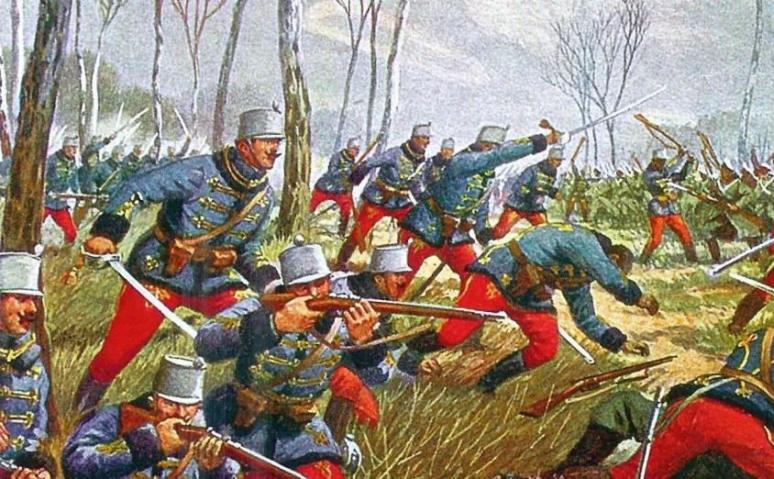September 1914
September 1914 did not bring luck to The Austro-Hungarian troops. Offensive operations against Serbia slowed after Russia’s war entry forced most of the troops to be directed to the northern front. In August, on this front, the Monarchy achieved temporary success. It broke into Russian terrain, but from there they were soon repulsed by Russian attacks. As a result, previous results were all lost. General retreat was unavoidable. In August, 50-60 km north of Lemberg and Przemysl, the border was crossed. The Russian 5th Army in the Komarów region was squeezed by the Austro-Hungarian 4th Army. It was beaten according to the subsequent military history description. However, in fact this beaten opponent repelled the “winning” army by about 100 km in a few weeks. Then they pushed the front line back to the Carpathian mountains for another four weeks.

During this period, there was still a moving war, with troops maneuvering in significant territory. In this battle mode, the main task of the cavalry troops was reconnaissance, a quick scratching attack. This is shown in the postcard above, highlighting Komarów’s example. They did their part in August. By September the equestrian troops had also been significantly weakened. Increasingly, it has become the cavalry’s job to cover the retreats. From this period, the volume “Hungarian Hussar” highlights the procrastination fightings of the 3rd Honvéd Hussar Regiment in the Niemirow area south-west of Rawa-Ruska.

On September 12, the regiment tried to repel Russian assailants of one division strength but soon received a withdrawal order. The order effectively instructed the regimental commander to leave the train behind. Translated this into common language: he instructed the commander to flee hastily. By contrast, the regiment’s commander ordered his squadrons to fight procrastinating. He arranged for the train, most notably the regiment’s field hospital, to be withdrawn. Meanwhile, Lieutenant Colonel Riedl, kept his fighting units moving and always strengthened the protection of the most vulnerable sections. Fortunately, the regiment received reinforcements from other mounted and infantry units moving in the area. Under the guidance of Lt. Col. Riedl he was able to effectively slow down the Russian attack by ensuring that the train was pulled away.
The Kappenabzeichen of the 3rd Honvéd Hussars shows the special hat of the hussars. The Budapest based ARKANZAS factory produced the hussar tschako in different colors and numbers for the 16 K.u.K. hussar regiments. The colors were chosen according to the original colors that differed by each regiment. However, the 3rd Honvéd hussar regiment’s Kappenabzeichen was produced by another company and is different from the well known ARKANZAS series. The cord of the hat is not the golden embroidered one but red (this is actually not authentic with the original hat’s cord). Moreover, on the left side the coat of arms of the Hungarian Kingdom is seen, the emblem of the Honvéd troops. In contrast, the K.u.K troops’ symbol was the double headed eagle, depicted on ARKANZAS’ series of tschako. The script “Rajta, rajta” is also special for this single badge. It was the combat cry of the Hungarian units during the war.

I attached a second Kappenabzeichen to this post, that of the XII. army corps. This unit also fought in Galicia in 1914 and underwent similar experiences then the 3rd Honvéd hussars. The badge expresses very dramatically all the misery that the A-H troops went through in 1914 with the end result: Russians passed Polish Galicia and intruded into Hungary’s territory in the Carpathian mountains. From that moment the war transformed to home defense for the Hungarian soldiers.




